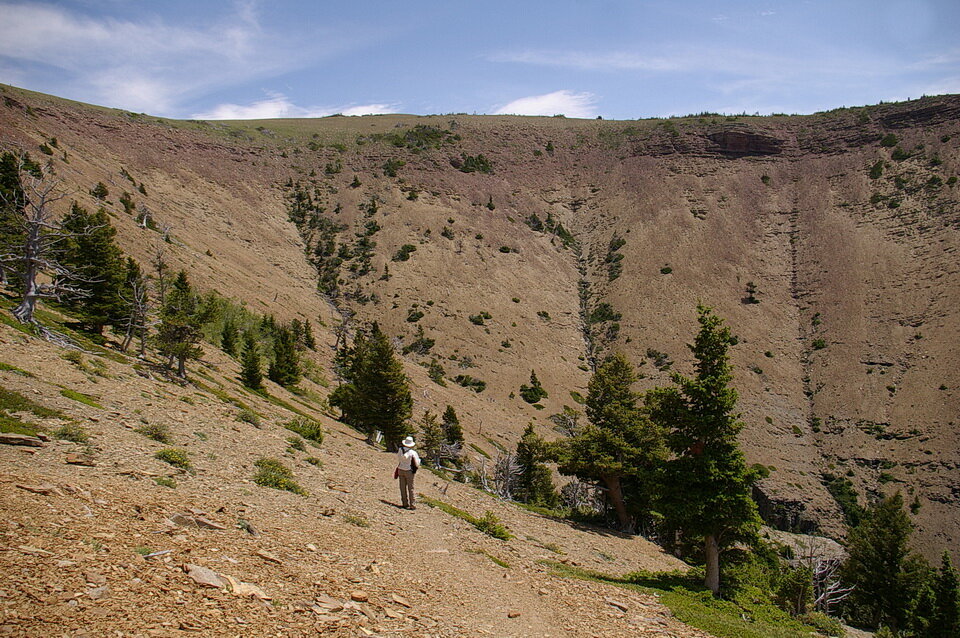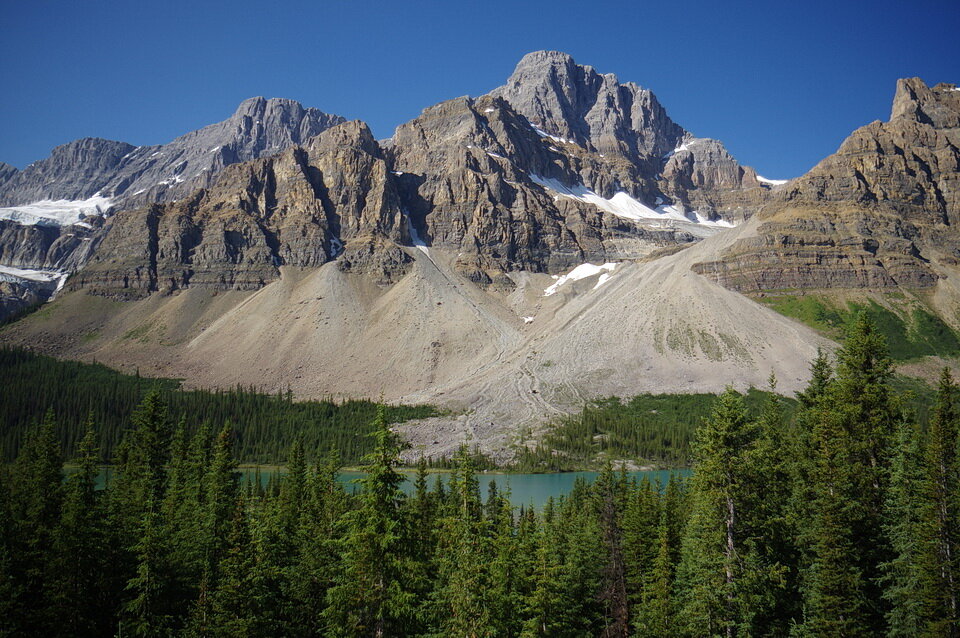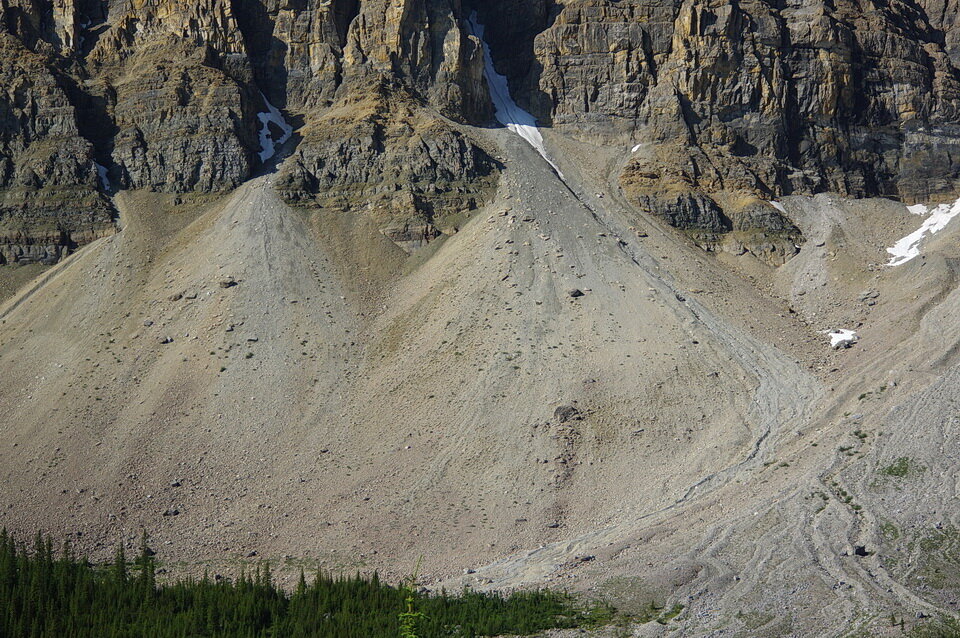Alberta: Scree vs Talus
I am asked this question several times each year. I am not an expert in this field. The terms talus and scree are often used synonymously. Geomorphologists and hikers sometimes have definitions that differ. So, what follows is a simple answer based on literature search.
Talus
Talus describes rock debris, which accumulated at the foot of the cliff (Photo 1). Talus larger in size than scree, up to house-size or bigger. The rock fragments are interlocked in a way to create a stable, non-loose surface. In Photo 1, the partially vegetated talus occurs as a cone of accumulated rock debris that came off the mountain.
Photo 1: Talus cone that accumulated off the mountain. Image by Andy Fyon, Lake Louise, Alberta, June 27/14.
Scree
Some use the term scree to describe any surface that is covered by loose rock (Photo 2), not just the accumulation of rock at the base of a cliff. The rock fragments are smaller (less than fist size) than average talus fragments. Scree is always loose. In Photo 2, the whole surface is considered to be a scree surface. The surface is derived by breakup (weathering) of "platey", flat rock rock, like shale or slate.
Photo 2: The person is standing on a scree surface, derived from the weathering and break up of slate. Photo by Andy Fyon at Table Mountain, Alberta, June 29/06.
This cute mnemonic may help: you ski on scree slope, but you boulder hop on talus.
Other Talus Images
Photo 3: Talus cones developed at the base of mountain cliffs, Bow Lake, Banff National Park, Alberta. Image by: Andy Fyon, Aug. 7/19.
Photo 4: Close up of talus cones developed at the base of mountain cliffs, Bow Lake, Banff National Park, Alberta. Image by: Andy Fyon, Aug. 7/19.
Other Scree Images
Photo 5: Cushion Buckwheat (Eriogonum ovalifolium) growing on a substrate of shale on a scree slope, Table Mountain, Alberta. Image by Andy Fyon, June 29/06.





